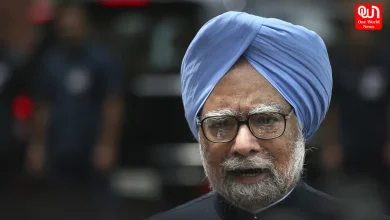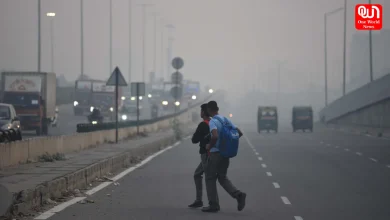How Much Is Your Car and Scooter to Blame for Delhi’s Worsening AQI?
Delhi AQI worsens every winter, and vehicles play a key role. Learn how much your car or scooter contributes to pollution and how EVs can help.
Exploring the Impact of Cars and Scooters on Delhi’s Worsening Air Quality Index (AQI) and How Electric Vehicles Can Be a Cleaner Alternative

Once again, the air quality index rises to alarming levels in Delhi with winter approaching. The toxic air in the capital city was attributed due to several factors, which range from stubble burning in the neighboring states, unfavorable weather conditions, and increasing vehicular population in the city. Although much attention is paid to stubble burning being one of the significant contributors to pollution, it’s wrong to negate the role of vehicles. Thanks to the Indian Institute of Tropical Meteorology (IITM) Pune, which recently conducted a study, it has come to an eye-opener on the extent that cars and scooters contribute to Delhi’s pollution crisis.
Read more: Engineering, chemistry students from Tamil Nadu arrested amid running meth lab from home in Chennai
Surprisingly, vehicles account for about 14% of the overall pollution levels according to IITM, while stubble burning, which usually receives much attention from the press, accounts for between 1.3% and 2.4%. But scarier is the fact that 32% to 44% sources of this pollution are unknown. However, with such unknown sources, vehicles are very much a part of the problem, and one wonders how many single cars and scooters are contributing to toxic air in the city.
Now, the age and type of vehicle in Delhi play a role in assessing its contribution to pollution. Very strict regulations come into effect in order to regulate vehicular emissions; and older petrol vehicles of 15 years are prohibited from plying on city roads, while diesel vehicles above 10 years cannot also ply on city roads.
This is mainly because older models, especially those aligned to BS3, emit a significantly larger amount of pollutants than the newer models set under BS6 regulations. BS3 diesel vehicles emit about 0.64 grams per kilometer (g/km) of carbon monoxide (CO), 0.50 g/km of nitrous oxide (NOx), and 0.56 g/km of hydrocarbons + nitrogen oxides (HC+NOx). Meanwhile, BS6 diesel vehicles have a far lesser emission, at about 0.50 g/km of CO, just 0.06 g/km of NOx, and 0.17 g/km of HC+NOx.
The differences are stark between the two sets of BS3 and BS6 standards. BS6 vehicles emit so much less in the way of pollutants it makes the distinction for city driving much more green. Even the latest petrol and diesel cars, though, run off huge amounts overall.
On average, a petrol engine emits 145 grams of CO2 per kilometer while a diesel engine emits somewhere in the ball-park of 165 grams of CO2 per kilometer. Hence, it is quite apparent that conventional vehicles, even if they follow all the norms of BS6, are mostly responsible for carbon emissions, which have a deteriorative effect on air quality in Delhi.
One of the most practical solutions that would help degrow vehicular pollution is electric vehicles. Electric cars and scooters don’t have any tailpipe emissions, so they don’t emit any pollutants directly into the air itself.
This makes them an attractive option for cities like Delhi, where vehicular emissions happen to be one of the major concerns. In terms of emission, electric cars and two-wheelers seem to produce zero emissions while operating, a sharp difference with their counterparts using petrol and diesel fuel.
However, critics have it that the manufacturing processes of electric vehicles, particularly the battery, are much more polluting than those of conventional vehicles. Despite all this, on a general basis, it can be said that EVs could certainly be considered as a clean and greener vehicle for daily commutes, particularly to pollution heavy urban areas.
read more: Supreme Court Critiques Centre on Ineffective Stubble Burning Regulations
Two-wheelers, scooters in particular, are the favourite modes of transport in Delhi. Unfortunately, they account for significant contributions to the pollution factor as well. A petrol powered scooter is typically known to emit about 175 grams of CO2 per kilometer along with nitrogen oxides and volatile organic compounds. Such emissions lead to severe smog and poor air quality in Delhi during the winter. In contrast, electric scooters and motorcycles emit near-zero pollutants, making them environmentally benign. As more individuals consume electric two-wheelers, the city can gradually see a reduction in the number of emissions from this share of vehicles.
Though stubble burning and weather conditions have added to the deteriorating AQI in Delhi, vehicular emissions form a major chunk of it. The study by IITM confirms that automobiles form a huge part of the total pollution happening in the city. Shift to electric vehicles, regulation of older vehicles, and implementation of cleaner fuel technologies will be crucial in curtailing vehicular pollution and improving the AQI in Delhi. As an owner of car and scooter, one cannot quite control all factors surrounding the creation of pollution in Delhi, but one can make a difference on his or her own by moving towards greener, more efficient transportation options in the fight against toxic levels of air.
We’re now on WhatsApp. Click to join.
Like this post?
Register at One World News to never miss out on videos, celeb interviews, and best reads.








